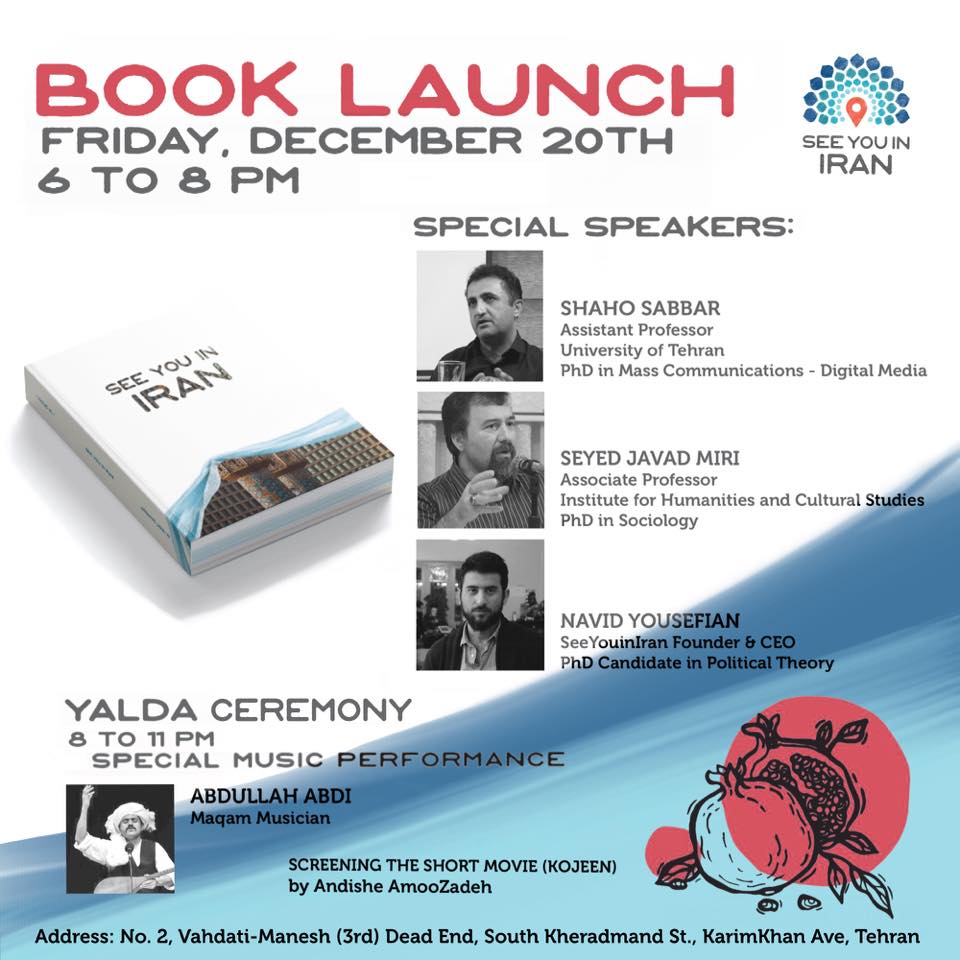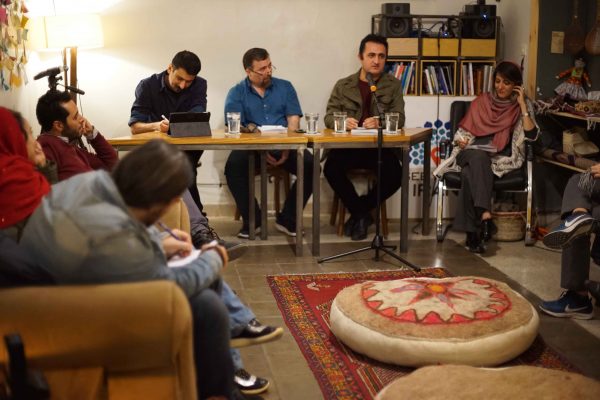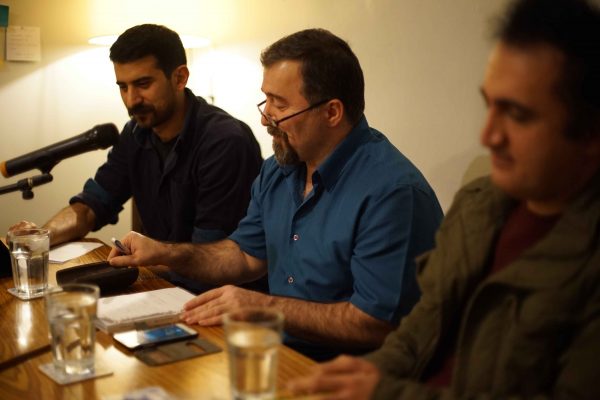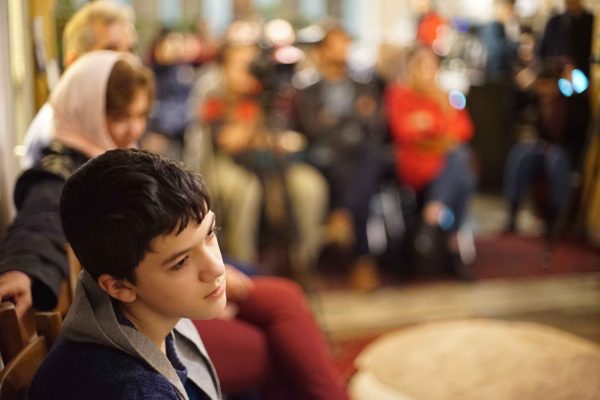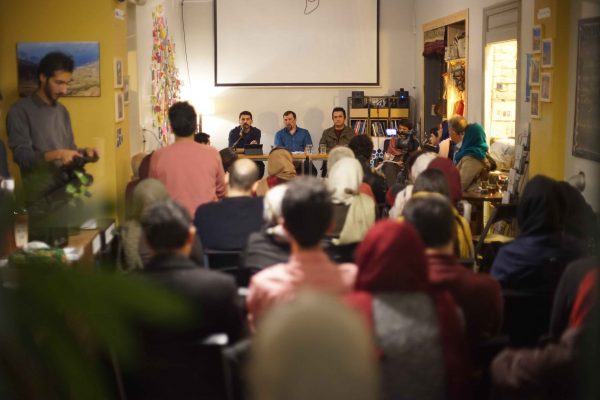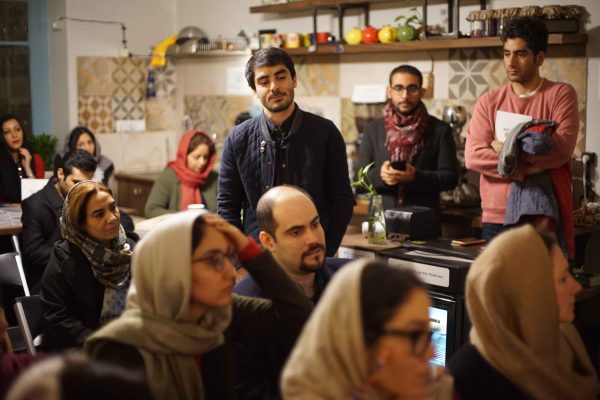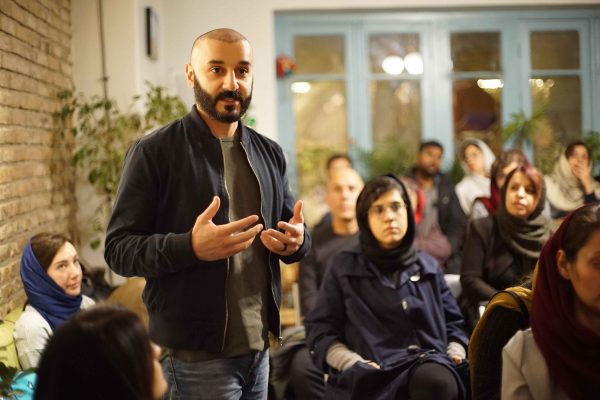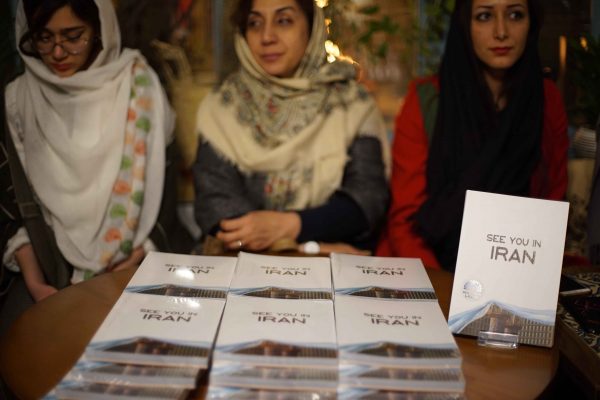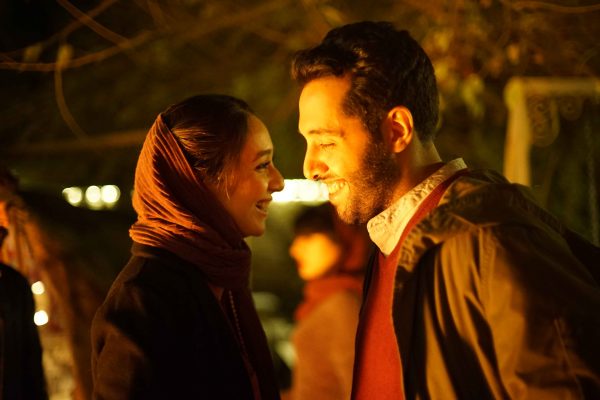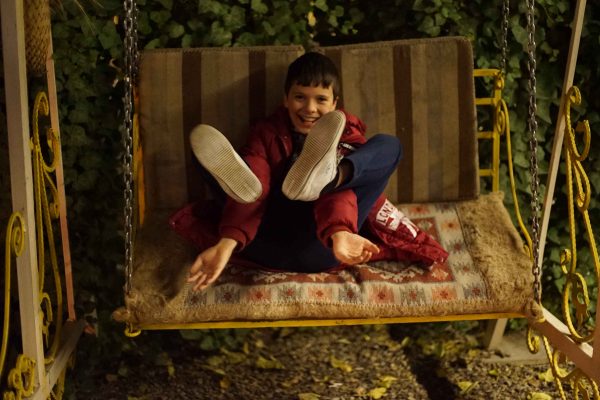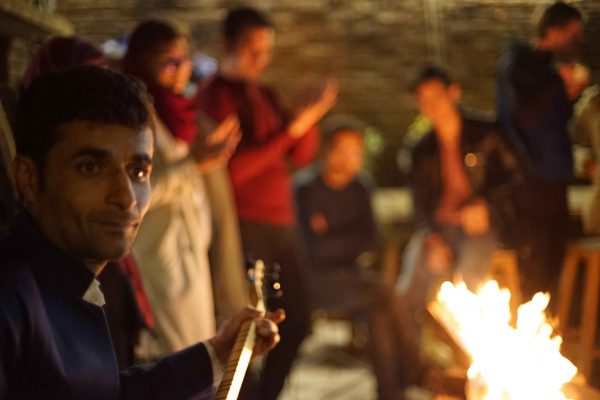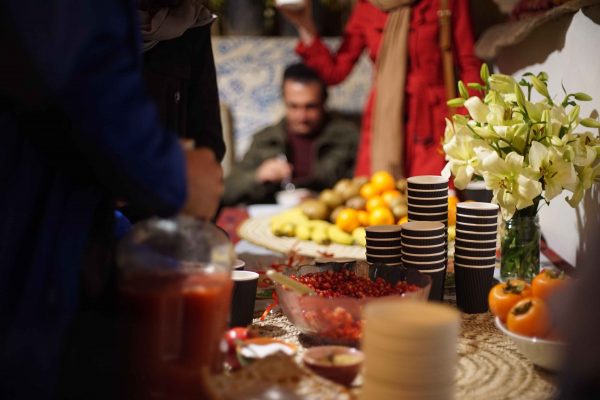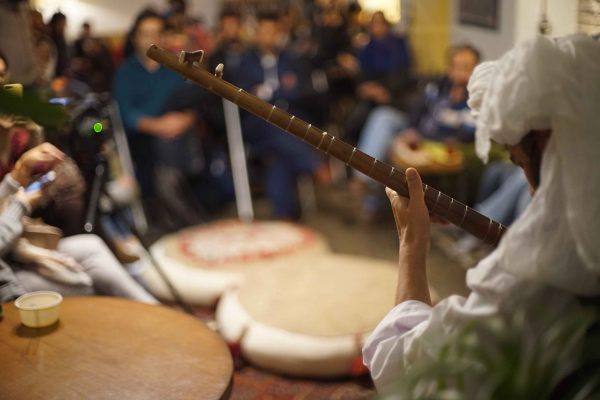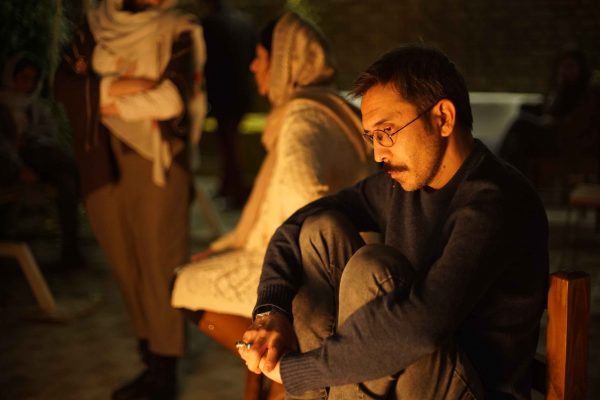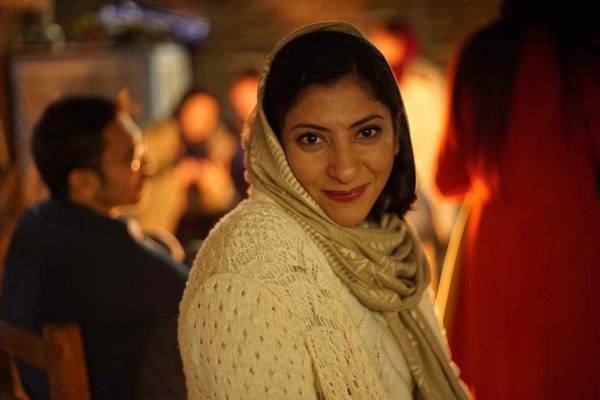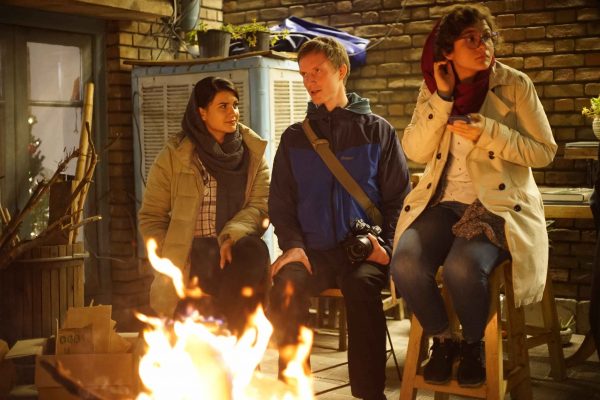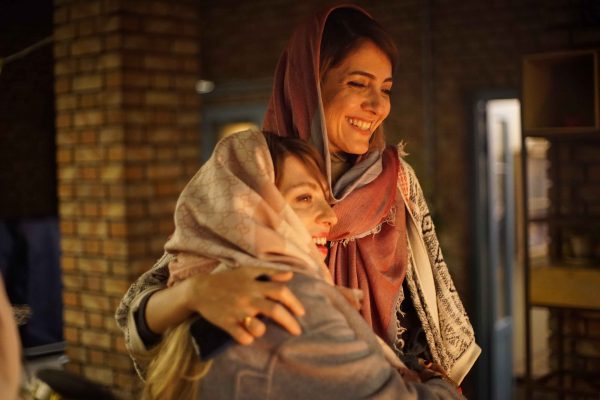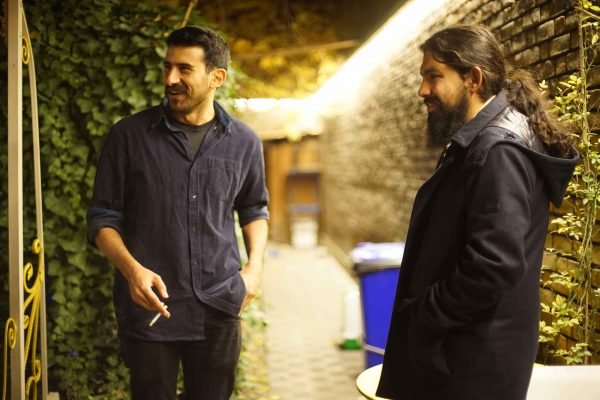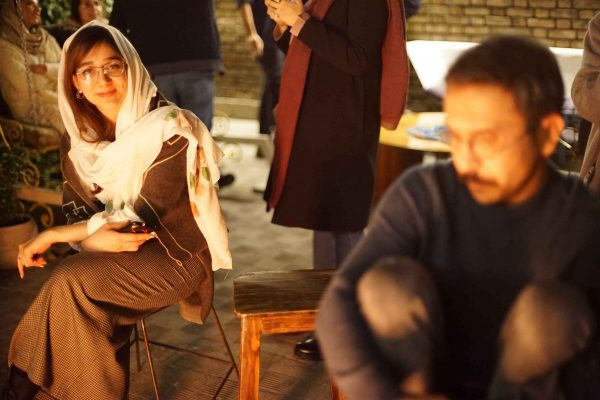See You in Iran Book Launch Event
What Happened …
The official book launch ceremony of the See You in Iran book was held at the SYI Cultural House, On December 20, 2019. The event began with presenting a short documentary named “Kojeen” made by Andishe Amouzadeh. This documentary represents a part of the happenings in SYI, including interviews with the travelers, their reasons to stay in Kojeen hostel, the sociocultural events and introducing team members of the Cultural House. After that, the overview session of SYI’s book took place with the panel team in attendance: Dr. Shaho Sabbar, Assistant Professor at Faculty of World Studies of University of Tehran, and holding a PhD in Mass Communication – Digital Media from Sogang University , South Korea; Dr. Seyed Javad Miri, associate professor at Institute of Humanities and Cultural Studies, and holding a PhD in Sociology from University of Bristol, England; and Navid Yousefian founder and director at See You in Iran, and Ph.D. Candidate in Political Science at UCSB.
At first, Reyhaneh Abdi, manager of the Cultural House and navigator of the session, presented SYI’s book as an archive of all accomplishments and activities of this organization from Facebook Group ground up to the foundation of Kojeen Hostel and the Cultural House, as a means of advancing this social project; from media activities to the online social forum, approaches of the institution’s founders, sociocultural events that have taken place and introducing social medias. Afterwards, Dr. Sabbar began his speech pointing out that despite his short-term acquaintance with SYI, not only he finds its atmosphere interesting, but also its aims significantly precious and promising: Since this shared goal is formed by a group of young people’s common experience and concern which they have got together for the progress of their aim. He went on saying that SYI book has determined clear ambitions: obviating the false ideas and misinterprets about Iran, avoiding Iran’s unreasonable whitewash, providing a platform for different narratives, … is one of the book’s outstanding and distinctive characteristics, giving space to foreigners and civilians in order to present their stories regardless of their negativity or positivity. Although this challenge remains that to what extend should the dark sides and present tensions within the country be clarified and analyzed for the travelers? In Dr. Sabbar’s opinion, bridging trust is an important issue on this matter. He explains even the American media continues to whitewash the situation of their country, and on the other hand Iran broadcasting TV (Seda-o-Sima) is only distributing negative facts about the US, and the right solution is a middle-ground one, which points out both aspects of reality, and this book has taken successful measures in that respect, indicating both hands of the truth. He believes, in fact, the audience of this book should be recognized (travelers, enthusiasts for goings-on in Iran, people inside the country, Academics, …?), and how much does the content fulfill their needs so according to that you may enhance its consistency. Also discussing Iranophobia, Sabbar considers it partly as a global project, but partly regarded to the limited information people have about Iran from all over the world, and things such as SYI book could alleviate the situation.
Dr. Javad Miri referred to a quote by Ali Shariati in his opening speech, stating that by studying different cultures and religions we will find out, for instance, Christianity’s origin goes back to the birth of Christ, but in Islam the prophet’s migration is the religion’s origin and the civilization afterwards. Unlike public institutions working in the area of tourism with remarkable budgets, in this book we are facing a narrative specifically coming from the migration’s experience of its creators; ones who were not in Iran for a while and have gained a global perception, and now taking a comprehensive look towards inside and outside the country: this is exactly the dialectic that should be built up between “local” and “global” which the Japanese scholars refer to as the term “globalization”. That means we could have a universal point of view while we take local measures, the thing which we perfectly see in this book. One of the interesting factors of this book is that the narratives are trying to change the dominant appearance of Iran outside the borders which unfortunately is wrong. This false image is due to both manipulation of the mainstream media and domestic politics; therefore, this book is a forward-moving step. But there is a threat: the contrast between orientalism and nativism; how could we not be ensnared by the European view about Iran, and not in a native one which shrinks Iran to an undifferentiated totality and non-plural with the same reality.
Navid Yousefian explained the book and emphasized the time when SYI founders came up with the idea of fighting Iranophobia, each one of them was living around the world and was facing this huge media project. We have reached a conclusion that Iran is not beyond the network of individuals’ narratives of the current reality and for that reason, we went after foreign tourists and asked them to share their critical stories with other people and a network of narratives and consequently a new reality about Iran beyond the clichés was gradually formed. But after a while and from a native viewpoint, one who lives inside Iran and experiences different tragedies, we realized we could not put that much insist on fighting Iranophobia from inside the country. From that point, we tried to address another issue in the Cultural House project and that was, in fact, producing a voice from inside of Iran which is capable of being utilized by the foreign audience and tries to show a new and different representation of Iran. Meanwhile, we attempted to avoid whitewashing Iran and not trying to show that things are normal for the sake of our economic benefits; therefore, we could build human-based tourism. We still believe despite all the political, social and economic isolation Iran suffers throughout the world, and despite all the present darkness, there is still some hope left and we should continue our way.
Abdi proceeded with asking this question from Dr. Sabbar that even though the global image of Iran is partly corrupted, it could not be said there is no trace of truth in it. For example, one of the images of Iran is a desolated desert which people are still using camels and cattle for transportation. This image sounds ridiculous to us and we are referring to all modern and technological achievements in Iran. And yet there are some schools with poor education facilities in villages. So where is the boundary between the two images and where do the limits of reality lay? Sabbar thinks each person has a different life experience, but generally, the foreign viewpoint differs from reality. Of course, we should be careful about the exaggeration of adjusting this picture, not viewing it as a total black or white. Miri continued answering the same question that the important thing we should pay attention to is the unbalanced development in Iran. For example, some people have a kind of lifestyle that does not even exist in Silicon Valley, while there are others living in conditions hardly compared to the most remoted war-torn areas of Afghanistan. Another problem is the uneven distribution of wealth and status which causes class discrimination. Apparently, the government at least had development and modernization concerns until the mid-70s, but after the revolution development and modernization is officially not that much popular and the government is rather seeking ideological progress. Therefore, the traditional part of the society was neglected before the revolution, as well as the taste of modernity which was partly ignored after that. In reply to this question of what is exactly See You in Iran willing to change, Yousefian mentioned nearing everyday sociocultural discourse to a discourse that has a global understanding of matters in a broader context is the greatest goal and plausible achievement of this organization. Maybe one of the features of this book is its attempt to analyze issues to the extent of its global horizons. An Indian traveler who was attending this meeting explained how he was quite influenced by propaganda and media advertising against Iran before he came here, and even how his people prevented him from traveling to Iran. But his first observations and experiences were completely against all those false beliefs, including the atmosphere and environment of the See You in Iran hostel itself and the culture of the Iranian people.
Mina who is a part of SYI team herself, brought up this question that one of the serious things we are mentioning here is about solidarity, but due to both foreign and home politics it stands against our goals, so what is the meaning of this unity? Dr. Miri believed one way of expanding the circles of solidarity, is collaborating with active pillars within the country, region and the world. We should not avoid this synergy because of the fear of losing independence, and we should cooperate with a comprehensive and welcoming sight with a variety of groups in line with our intended goals, and take advantage of existing opportunities especially from countries which are outside the western circle of power. We should question ourselves how could we reach long-term targets by taking one small step at a time. Another attender pointed out the role and potentials of Iranians abroad and diaspora for cooperating with SYI and its goals in introducing Iran and sharing narratives. Erfan, another participant asked about the line between fighting Iranophobia and being whitewashed. Where does SYI hold on to its political views without taking diplomatic measures? Yousefian explained SYI’s policies vary in different areas; for example, our Facebook group is a platform for all thoughts and viewpoints, aside from our political stance, but in media posts and Cultural House’s events, we carry out the social and political sight we have in mind and the voice which we are willing it to be heard.
By the end of the book launch ceremony of See You in Iran’s book, Yalda night ceremony took place along with traditional catering, reading Hafez (a great Iranian poet) next to the fireplace and of course the feast went on with a warm and unique piece of music performed by a Khonyagar from Torbat-e-Jam, Abdollah Abdi, who made this night memorable for all audience by playing do-taar (A traditional instrument) and his narration performance.
روز ۲۹ آذر ماه ۱۳۹۸ مراسم رونمایی رسمی کتاب See You in Iran در محل خانهی فرهنگی این مجموعه برگزار شد. در آغاز مراسم فیلم «کوژین» ساختهی اندیشه عموزاده به نمایش درآمد. مستند کوتاه کوژین نمایشگر گوشهای از فعالیتهایی است که در مجموعهی SYI روی میدهد، و شامل مصاحبه با مسافران، دلایل اقامت آنها در هاستل کوژین، رویدادهای فرهنگی اجتماعی خانهی فرهنگی و معرفی اعضای تیم میشود. پس از نمایش فیلم، نشست معرفی و نقد و بررسی کتاب See You in Iran با حضور اعضای پنل برگزار شد: دکتر شاهو صبار، استادیار دانشکده مطالعات جهان دانشگاه تهران و دارای دکترای رسانههای جمعی/رسانههای دیجیتال از دانشگاه سوگانگ کره جنوبی؛ دکتر سید جواد میری، دانشیار پژوهشگاه علوم انسانی و مطالعات فرهنگی و دارای دکترای جامعه شناسی از دانشگاه بریستول بریتانیا؛ و نوید یوسفیان موسس و مدیر عامل موسسه See You in Iran و دانشجوی دکترای نظریه سیاسی از دانشگاه کالیفرنیا سانتاباربارا.
در ابتدا ریحانه عبدی، مدیر خانه فرهنگی و هدایتگر نشست، کتاب SYI را به عنوان آرشیوی از تمام دستاوردها و فعالیتهای این سازمان از آغاز شکل گیری گروه فیسبوک، تا تاسیس هاستل کوژین و خانهی فرهنگی به عنوان ابزاری برای پیشبرد این پروژه اجتماعی معرفی کرد؛ از فعالیتهای رسانهای گرفته، تا روایتهای جامعهی آنلاین، رویکردهای پایهگذاران موسسه، رویدادهای فرهنگی اجتماعی برگزار شده و معرفی موسسه در رسانههای جمعی. سپس دکتر صبار صحبتهایش را با این نکته آغاز کرد که علی رغم آشنایی کوتاهمدت با مجموعهی See You in Iran، نه تنها بنظرش فضای آن جذاب بوده، بلکه اهدافش را بسیار ارزشمند و امیدبخش یافته است: چرا که این هدف مشترک از یک تجربه و دغدغهی مشترک گروهی از جوانان شکل گرفته که برای پیشبرد هدفشان گرد هم جمع شدهاند. وی ادامه داد کتاب SYI اهداف روشنی را مشخص کرده: از میان بردن تصورات غلط و سوبرداشتها دربارهی ایران، دوری از سفیدشویی (whitewash) غیرمنطقی ایران، فراهم آوردن فضایی برای روایتهای مختلف و… یکی از نکات برجسته و متمایز این کتاب، فضا دادن به افراد خارجی و داخلی برای ارائهی روایتهایشان است؛ فارغ از مثبت یا منفی بودن این نظرات. البته چالشی در این زمینه وجود دارد که تا چه میزان باید تمام این نقاط تاریک و تنشهای موجود در کشور را برای گردشگران خارجی باز و تحلیل کرد؟ بنظر دکتر صبار بحث اعتمادزایی در این مساله حائز توجه است. صبار توضیح داد که حتی رسانههای آمریکایی هم به شکل مداوم به سفیدشویی اوضاع کشورشان مشغولند، و از طرف دیگر هم مثلا صدا و سیما تنها واقعیات منفی ایالات متحده را منعکس میکند، و راه حل صحیح راه حلی میانی است که به هر دو جنبه واقعیت بپردازد و این کتاب از این حیث موفق عمل کرده و هر دو سوی واقعیت ایران را نمایش داده است. البته صبار معتقد بود که باید مشخص شود مخاطب کتاب کیست (گردشگران، علاقه مندان به مسائل ایران، افراد داخل ایران، آکادمیسینها…؟) و چه نیازهایی از این افراد را برآورده میکند تا بر آن اساس به انسجام مطالب افزود. همچنین در بحث ایرانهراسی، صبار معتقد بود که بخشی از مسالهی ایرانهراسی یک پروژهی جهانی است، اما بخشی نیز به اطلاعات محدود مردم دیگر نقاط جهان از ایران بازمیگردد، که کارهایی مشابه کتاب SYI میتواند به بهبود این وضعیت کمک کند.
دکتر جواد میری در سخنرانی آغازینش، با نقل جملهای از علی شریعتی گفت با نگاه به تمدنها و ادیان مختلف، میتوان دید که مثلا در مسیحیت میلاد حضرت مسیح مبدا آن دین است، اما در اسلام هجرت پیامبر مبدا آن دین و تمدن بعد از آن است. در این کتاب هم برخلاف موسسات دولتی با بودجههای کلان که در حوزهی گردشگری فعالند، با روایاتی مواجهیم که مشخصا از تجربهی هجرت پدیدآورندگانش حکایت میکند؛ افرادی که برای مدتی در ایران نبودهاند و نگاه و چشم اندازی جهانی کسب کردهاند، و حالا با آن چشم انداز جهانی به داخل نگاه میکنند و با نگاه داخلی به جهان نگاه میکنند: این همان دیالکتیکی است که باید بین «local» و «global» ایجاد شود که اندیشمندان ژاپنی از آن به عنوان «glocalization» یاد میکنند. یعنی ما میتوانیم نگاهی جهانی و global داشته باشیم اما کنشهایمان داخلی و local باشد، این مساله به زیبایی در کتاب دیده میشود. یکی از نکات جالب کتاب آن است که روایتها به دنبال تغییر تصویر غالب از ایران در خارج از مرزهاست که متاسفانه تصویری نادرست است. البته این تصویر نادرست هم ناشی از تصویرسازی غلط رسانههای جریان اصلی است، و هم سیاستها و رویکردهای داخلی، لذا این کتاب یک حرکت رو به جلوست. اما خطری وجود دارد و آن تقابل میان orientalism و nativism است؛ چطور میتوانیم نه به دام روایت اروپامدارانه از ایران بیافتیم، و نه به دام یک روایت بومی که ایران را به یک کلیت یکپارچه و غیرمتکثر با یک واقعیت واحد تقلیل میدهد.
نوید یوسفیان توضیحاتی را راجع به کتاب ارائه کرد و تاکید کرد آن زمان که ایدهی مبارزه با ایرانهراسی در میان موسسان SYI شکل گرفت، هر کدام در گوشهای از دنیا زندگی میکردند و با این پروژه بزرگ رسانهای مواجه شده بودند. ما به این نتیجه رسیدیم که ایران هم چیزی ورای روایت افراد از یک واقعیت موجود نیست و به همین دلیل هم به سراغ گردشگران خارجی رفتیم و از آنها خواستیم روایتهای انتقادی خود را با دیگران به اشتراک بگذارند و شبکهای از روایتها شکل گرفت. ولی بعد از مدتی و از نگاه فردی که در داخل ایران زندگی میکند و اتفاقات تلخ مختلف داخل کشور را تجربه میکند به این نتیجه رسیدیم که چندان هم نمیتوانیم بر مبارزه با ایرانهراسی از داخل تاکید کنیم. از آنجا سعی کردیم با پروژههای خانهی فرهنگی به مسالهی دیگری بپردازیم و آن هم تولید صدایی از داخل ایران بود که قابل مصرف برای مخاطب خارجی باشد و سعی کند بازنمایی جدید و متفاوتی از ایران ارائه دهد. در عین حال هم تلاش کردیم از سفیدشویی ایران فاصله بگیریم و سعی نکنیم برای منافع اقتصادی، شرایط را نرمال و عادی نشان دهیم و در نتیجه بتوانیم به یک گردشگری انسانمحور برسیم. ما کماکان معتقدیم که علیرغم انزوای سیاسی اجتماعی اقتصادی ایران در دنیا، و علیرغم تاریکیهای موجود در ایران، هنوز هم نمیتوان تسلیم شد و باید ادامه داد.
در ادامه عبدی این پرسش را از دکتر صبار مطرح کرد که هرچند بخشی از تصویر جهان از ایران مخدوش است، ولی چندان هم نمیتوان گفت هیچ جای پایی در واقعیت ندارند. مثلا یکی از تصاویر از ایران بیابانی برهوت است که حمل و نقل افراد هنوز با چارپایان و شتر صورت میگیرد. این تصویر برای ما مضحک است و به تمام دستاوردهای تکنولوژیک و مدرن در ایران اشاره میکنیم. اما از سویی دیگر هنوز هستند روستاهایی که مدارس آنها در آغل تشکیل میشود. پس مرز میان این دو تصویر کجاست و واقعیت کجا نهفته است؟ صبار معتقد بود تجربهی زیستهی هر فرد متفاوت است ولی عموما دیدگاه خارجی خیلی با واقعیت تفاوت دارد. البته باید دقت کرد در تصیحیح این تصویر، چندان هم اغراق نکرد و نه سیاه کامل و نه سفید کامل نشان داد. میری در ادامهی همین پرسش عنوان کرد که مسالهی مهمی که باید مورد توجه قرار گیرد، بحث توسعهی نامتوازن در ایران است. چون مثلا بعضی افراد دارای سبک زندگیای هستند که ممکن است حتی در سیلیکون ولی آمریکا نیز وجود نداشته باشد، ولی افرادی نیز هستند که وضعیت زندگیشان شاید حتی در دورافتادهترین مناطق کشور جنگزدهی افغانستان نیز دیده نشود. مشکل دیگر نیز عدم توزیع عدلانهی منابع و ثروت و منزلت است که منجر به بروز شکاف میشود. مسالهی دیگر آن است که تا اواسط دههی ۱۳۵۰ حاکمیت دست کم در حرف دغدغهی توسعه و مدرنیزاسیون را داشت، اما بعد از انقلاب حداقل بصورت رسمی توسعه و مدرنیزاسیون چندان مورد پسند نیست و بیشتر به دنبال پیشرفت ایدئولوژیک است. بنابراین قبل انقلاب بخش سنتی جامعه بیشتر نادیده گرفته میشد و بعد از انقلاب بخشی با ذائقهی مدرنتر نادیده گرفته شدند. در پاسخ به این سوال که See You in Iran دقیقا به دنبال ایجاد چه تغییری است، یوسفیان عنوان کرد نزدیک کردن گفتمان اجتماعی فرهنگی روزمره، به گفتمانی که مسائل را جهانی و در بستری جامعتر درک میکند بزرگترین هدف و دستاورد متصور برای این مجموعه است. شاید یکی از ویژگیهای این کتاب آن است که سعی میکند مسائل را در افقهای جهانیاش تحلیل کند. یکی از حاضران نشست نیز که از هند به ایران سفر کرده بود، عنوان کرد که قبل از حضور در ایران کاملا تحت تاثیر پروپاگاندا و تبلیغات رسانهای علیه ایران قرار داشت، و حتی هموطنانش او را از سفر به ایران منع میکردند. اما مشاهدات و تجربیات دست اولش کاملا در تناقض با این تصاویر بود؛ از جمله محیط و فضای همین هاستل کوژین و فرهنگ افراد ایرانی.
مینا که خود از همکاران مجموعه است این سوال را مطرح کرد که یکی از مسائل مهمی که مطرح میکنیم، بحث همبستگی است، اما با توجه به سیاستهای جهانی و داخلی که دقیقا در تضاد با اهداف ما هستند، منظور از این همبستگی چیست؟ دکتر میری معتقد بود یکی از روشهای گسترش همبستگی، همکاری با دیگر ارکان فعال در کشور، منطقه و جهان است. نباید از ترس از دست رفتن استقلال، از همکاری اجتناب کرد و باید با دیدگاهی همه جانبه و پذیرا، در راستای اهداف موردنظر با گروههای مختلف همکاری کرد و از فرصتهای موجود در کشورهای بخصوص خارج از حلقهی قدرت غربی استفاده کرد. سوالی که باید از خود بپرسیم آن است که چگونه میتوانیم برای رسیدن به اهداف بزرگ، قدمهای کوچک برداریم. یکی دیگر از حاضران به نقش و پتانسیلهای ایرانیان خارج از کشور و دیاسپورا برای همکاری با مجموعه و اهداف SYI در معرفی ایران و به اشتراکگذاری روایتها اشاره کرد. عرفان از دیگر شرکتکنندگان رویداد از مرز میان مبارزه با ایرانهراسی، و افتادن به دام سفیدشویی پرسید. مجموعهی SYI کجا مواضع سیاسی خود را حفظ میکند بدون آن که سیاسی عمل کند؟ یوسفیان در توضیح گفت سیاستهای مجموعه در ساحتهای مختلف متفاوت است؛ به عنوان مثال بستر فیسبوک بستری برای تمام افکار و دیدگاههاست فارغ از دیدگاه سیاسی ما، اما در پستهای رسانهای و رویدادهای خانهی فرهنگی، دیدگاه اجتماعی و سیاسی مدنظر خود و صدایی که میخواهیم شنیده شود را پیش میبریم.
با پایان نشست رونمایی کتاب See You in Iran، مراسم شب یلدا با پذیرایی سنتی، حافظ خوانی در کنار آتش و البته اجرای استثنایی و گرم خنیاگر خطهی تربت جام، عبدالله عبدی ادامه یافت که با دوتارنوازی و روایتگری خود، شب یلدایی به یاد ماندنی برای حاضران رقم زد.
What to Expect
We invite you to the official See You in Iran Book launch, and celebrate the anniversary of the opening of SYI Hostel (Kojeen) on Yalda night.
With the screening of the short film “Kojeen” by Andishe Amoozadeh
Friday, December 20th, 6 to 8 p.m.
After the book launch, we are going to celebrate Yalda, the longest night of the year from 8 to 11 p.m., with a special music performance by Abdullah Abdi, a Maqam musician from Khorasan. You can also bring your music instruments to make a memorable Yalda night.
